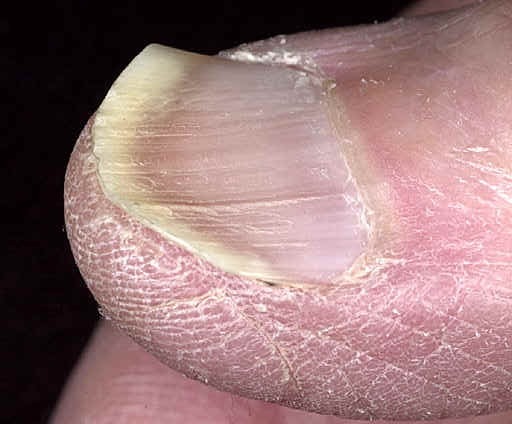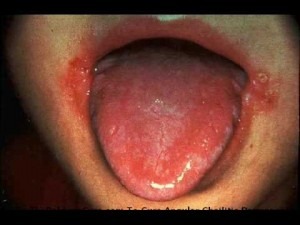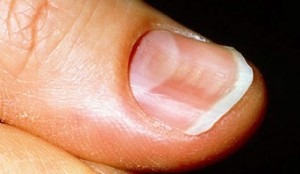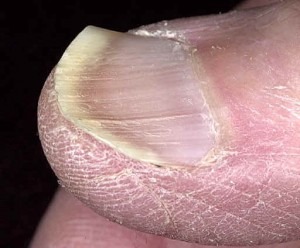Iron Deficiency Anemia
Iron deficiency anemia is the most common type of anemia, and it occurs when your body doesn’t have enough iron. Your body needs iron to make hemoglobin. When there isn’t enough iron in your bloodstream, the rest of your body can’t get the amount of oxygen it needs.
Iron is a mineral. Most of the iron in the body is found in the hemoglobin of red blood cells and in the myoglobin of muscle cells. Iron is needed for transporting oxygen and carbon dioxide. It also has other important roles in the body. In people with iron deficiency anemia, the red blood cells can’t carry enough oxygen to the body because they don’t have enough iron. People with this condition often feel very tired.
Iron helps red blood cells deliver oxygen from the lungs to cells all over the body. Once the oxygen is delivered, iron then helps red blood cells carry carbon dioxide waste back to the lungs to be exhaled. Iron also plays a role in many important chemical reactions in the body.
Ferritin:
What is the difference between ferritin and iron?
Ferritin is a good indicator of how much iron is stored within our body. For example, if a blood test reveals ferritin levels are low, this could be a sign of iron deficiency anemia. Approximately one-quarter of the total iron in the body is stored as ferritin. Ferritin has a vital function in the absorption, storage, and release of iron. It has a large iron core which can store up to 4000 iron atoms. These atoms are protected by the protein coat of the ferritin protein, called apoferritin. Most ferritin is found in the liver but it can also be present in the spleen, bone marrow, and the muscles.
Normal ferritin levels are between 13 and 150 µg/L, although this can change depending on the laboratory testing the sample.
It is important to note that ferritin levels can be raised in certain conditions, including:
- Inflammation
- Liver disease
- Malignancy
- Iron supplement therapy
- Significant tissue destruction
In these instances, the increased ferritin levels are not a reflection of the body’s iron stores.
Transferrin and Iron-binding Capacity:
Transferrin is the main protein in the blood that binds to iron and transports it throughout the body. A transferrin test directly measures the level in the blood. Alternatively, transferrin may be measured indirectly (or converted by calculation) so that its level is expressed as the amount of iron it is capable of binding. This is called the total iron-binding capacity (TIBC).
Incidence of iron deficiency anemia:
Over 10% of Western urban populations are iron deficient though not all are anemic. In many other parts of the world, the incidence is still higher. Iron deficiency anemia is particularly common in women of childbearing age.
Causes:
1- Poor diet:
Foods rich in iron include:
- Red meat.
- Beef liver.
- Poultry.
- Seafood.
- Beans.
- Dark green leafy vegetables, such as spinach.
- Dried fruit, such as raisins and apricots.
- Iron-fortified cereals, bread, and pasta.
2- Malabsorption of iron:
- Following stomach surgery (rapid transit).
- Lack of stomach HCL acid (achlorhydria): stomach acidity is required for the absorption of iron.
- Coeliac disease.
3- Blood loss:
This may be due to heavy periods or bleeding from the bowel or urinary system.
Clinical Features:
- General features of anemia: tiredness, shortness of breath on effort, dizziness, and headaches.
- Angular stomatitis and atrophic glossitis.
- Brittle spoon-shaped nails (koilonychia).
- Brittle sparse hair.
- Pruritis vulvae (itching around female private parts).
- Rarely a posterior cricoid web may develop (Plummer-Vinson syndrome).
Investigations:
FBC (Full Blood Count) and Blood Film:
- Microcytosis (small red cells – MCV <78fl) appears first and progresses as anemia develops.
- Hypochromia (red cells contain less hemoglobin).
- Anisocytosis (variation in red cell size).
- Poikilocytosis (variation in red cell shape).
- Pencil cells are characteristic.
- White cell count and platelet count are usually normal, however, platelet count may rise if the cause of the iron deficiency is blood loss.

Note the small red cells containing a narrow rim of hemoglobin at the periphery. Compare to the scattered, fully hemoglobinized cells derived from a recent blood transfusion given to the patient.
Biochemistry:
- Serum iron is low (normal range: 10-30 umol/L).
- Total Iron Binding Capacity (TIBC) is high normal or raised (normal range: 40-70 umol/L).
- The % Iron Saturation (Transferrin Saturation) is usually <10% (serum iron/TIBC).
- Serum Ferritin is reduced (usually < 10 ug/dL), although it may be misleadingly higher if there is a coexistent inflammation, infection or malignancy.
Once iron deficiency is diagnosed the underlying cause MUST BE ESTABLISHED by thorough history taking, physical examination, and relevant further investigations like upper and lower Gastrointestinal endoscopy (OGD & Colonoscopy) if GI blood loss or Coeliac disease are suspected; ultrasound scan of the uterus to out rule fibroids if menorrhagia is the likely cause of the iron deficiency anemia is also warranted.
IT IS NOT ENOUGH TO REPLACE THE DEFICIENT IRON … IN ALL CASES, THE CAUSE OF THE IRON DEFICIENCY SHOULD BE IDENTIFIED! IRON DEFICIENCY ANEMIA COULD BE THE FIRST PRESENTING SIGN OF BOWEL CANCER IN THE ELDERLY!
Treatment:
Oral iron:
Oral iron is given to correct the anemia and then replete the body stores (3-6 months).
Iron is best absorbed on an empty stomach (usually if taken 1 hour before or 2 hours after meals). If stomach upset occurs, you may take it with food.
Ferrous sulfate 200mg three times daily is cheap and effective though the dose must be reduced in patients who experience side-effects!
Ferrous fumarate capsules (Galfer) 210 mg once or twice daily is also effective.
Oral iron may cause Gastrointestinal disturbances e.g. constipation, diarrhea, stomach discomfort, and feeling sick. Some patients are intolerant of oral iron and parenteral iron may be considered if the anemia is severe.
For patients who have difficulty tolerating oral iron supplements, administer smaller, more frequent doses; start with a lower dose and increase slowly to the target dose; try a different form or preparation, or take with or after meals or at bedtime.
Iron-drug interactions of clinical significance may occur in many patients and involve a large number of therapies. Concurrent ingestion of iron causes marked decreases in the bioavailability of a number of drugs e.g. tetracycline, tetracycline derivatives (doxycycline, methacycline, and oxytetracycline), penicillamine, methyldopa, levodopa, carbidopa, and ciprofloxacin. The major mechanism of these drug interactions is the formation of iron-drug complexes (chelation or binding of iron by the involved drug). A large number of other important and commonly used drugs such as thyroxine, captopril, and folic acid have been demonstrated to form stable complexes with iron.
Parenteral iron:
This should only be used if oral iron cannot be tolerated or if negative iron balance persists.
There are many available preparations that can be given as an intravenous iron infusion in the hospital like Injectafer, CosmoFer, Monofer, and Venofer. Parenteral iron should only be administered under strict medical supervision.
References:
Hillman RS, et al. (2011). Iron-deficiency anemia. In RS Hillman et al., eds., Hematology in Clinical Practice, 5th ed., pp. 53-64. New York: McGraw-Hill.
Means RT (2012). Red blood cell function and disorders of iron metabolism. In EG Nabel, ed., ACP Medicine, section 15, chap. 21. Hamilton, ON: BC Decker.
Polk RE, Healy DP, Sahai J et al. Effect of ferrous sulfate and multivitamins with zinc on absorption of ciprofloxacin in normal volunteers. Antimicrob Agents Chemother. 1989; 33:1841-4.
What is the difference between ferritin and iron?https://www.forthwithlife.co.uk/blog/whats-the-difference-between-ferritin-and-iron/
Transferrin and Iron-binding Capacity (TIBC, UIBC) | Lab Tests Online https://labtestsonline.org/tests/transferrin-and-iron-binding-capacity-tibc-uibc
Disturbing Signs Your Body Is Lacking Iron. https://brightside.me/inspiration-health/10-disturbing-signs-your-body-is-lacking-iron-513660/
Keywords:
Iron deficiency anemia symptoms, iron deficiency anemia treatment, iron deficiency anemia diagnosis, iron deficiency anemia lab results, iron deficiency anemia pregnancy, iron deficiency anemia nails, iron deficiency anemia diet, iron deficiency anemia symptoms in women, iron deficiency anaemia symptoms in child, iron deficiency anaemia labs ferritin, iron deficiency anaemia labs rdw, iron deficiency anaemia labs mcv, iron deficiency anemia labs iron saturation, iron deficiency anaemia treatment guidelines, iron deficiency anemia treatment food, iron deficiency anaemia treatment dose, iron deficiency anemia treatment drugs.














This blog is a good read and the most fascinating thing is the way the topic is explained. I am going to recommend it to my peers and family.
Hi Manipal,
Thank you for your comment.
Pleased that you found this article helpful.
BW
Sir, Can you please tell which stain you used to stain the cells and also the type of microscope used and the magnification under which it was observed?